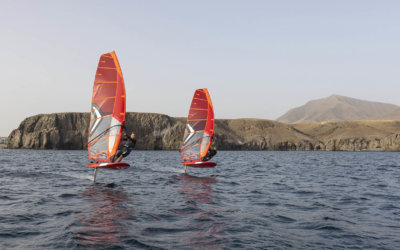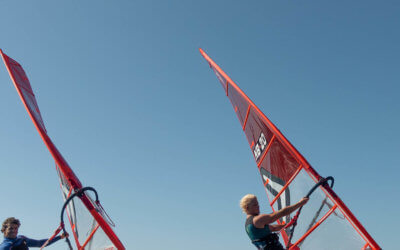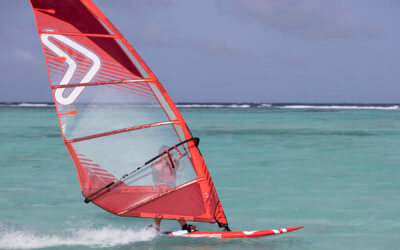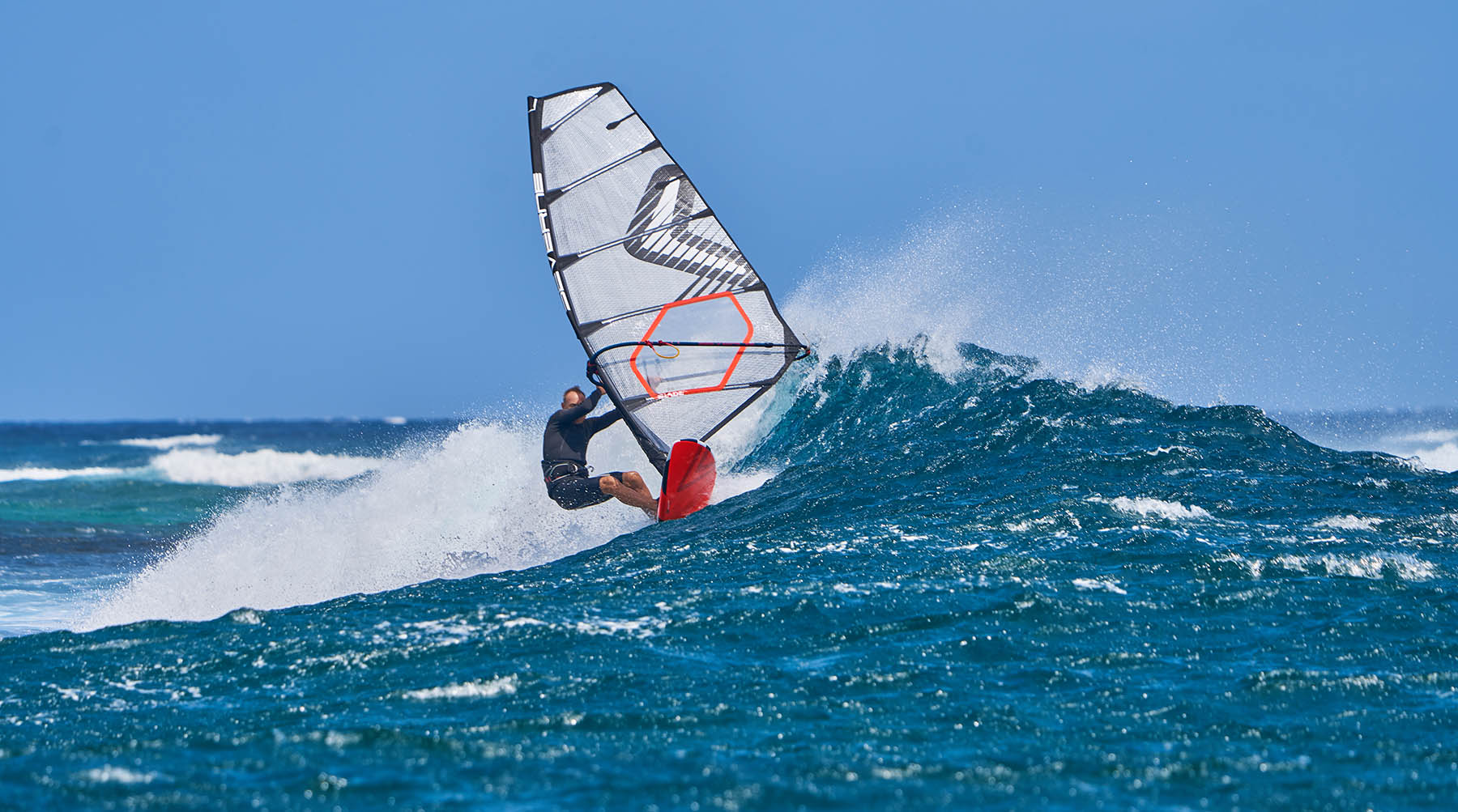
Get tuned up for the waves
Windwise coach and Severne Team Rider, Simon Bornhoft, continues his ‘Hang In There’ harness line series looking at different disciplines and sailing styles. For this issue, we shift the focus and harness line positions for the Freewave, Wave & Freestyle playgrounds. So whether you’re a weekend wave warrior or looking to fine tune like a pro, wise up and read on….
Featuring: Philip Koster / Daida Moreno / Iballa Moreno / Amado Vrieswijk
Photos: Windwise / Severne / Louis-arnaud Lavasier
“I use them like that all the time, it’s where I have them on my boom”.
I’m at the ‘office’ checking out someone’s kit on the beach, staring down at some dangerously exhausted harness lines permanently embedded into the boom, they’re begging to be moved. The cheery chap says, “I use the same boom on my 4.5-6m and that’s where my lines go, I like them like that”.
Upon further inspection, he’d been sailing with the lines pretty much fixed in the same position, regardless of sail size. It looked like they hadn’t moved for years. This might seem crazy to those who’ve grasped the basics harness line tuning to wind changes and sail sizes, yet it’s actually not uncommon for harness lines to become bonded to the boom and never moved to the ‘right place’. This is especially true when it comes to switching to smaller more move orientated boards and sails compared to Freeride setups. Fundamentally, if there’s a change in board type, board width and footstrap set up then there’s a very high chance the boom height and harness line position is going to change too.
For this features we’ll discover;
- How Team Severne pros set their harness lines for Freewave-Wave and Freestyle.
- How that compares to Freeride + Slalom set up.
- How to switch from a blast and gybe routine, to more manoeuvrable kit set up.
Read on to answer all these questions and more….
Intro
In our last Freeride feature, linked here, we were fully loaded and focused on locked down power with a balanced blasting set up for your weekend fix. Now we switch gear completely, both in terms or what kit we’re using, but also in the loading, feel and finesse of the rig.
Wave & Freestyle Set Ups Compared To Freeride/Race Kit Set Up
When moving to shorter, narrower and more sensitive Freewave, Wave and Freestyle kit, you’ll notice these key points.
Mast Bases: Boards feel ‘smaller’, more compact and mast bases are further back.
Footstraps: Positioned further forward and inboard.
Boom Height: The rearward mast base and forward/inboard straps, means a lower boom!
Fin Sizes: Smaller with reduced lift and loading through the fin when blasting along.
Boom Length: Shorter booms, higher clews and less locked in feel.
Wave/Freestyle Sail: Higher aspect, more rearward centre of effort and backhand pressure.
Harness Lines: Usually slightly longer line length and comparatively more rearward line positioning
compared to a Freeride rig of same size. This is due to a more rearward centre of effort on wave orientated rigs.
Pro Wave & Freestyle Set Up
Let’s hear what Team Severne has to say about their wave set up, first off wave supremo, Philip Koster.
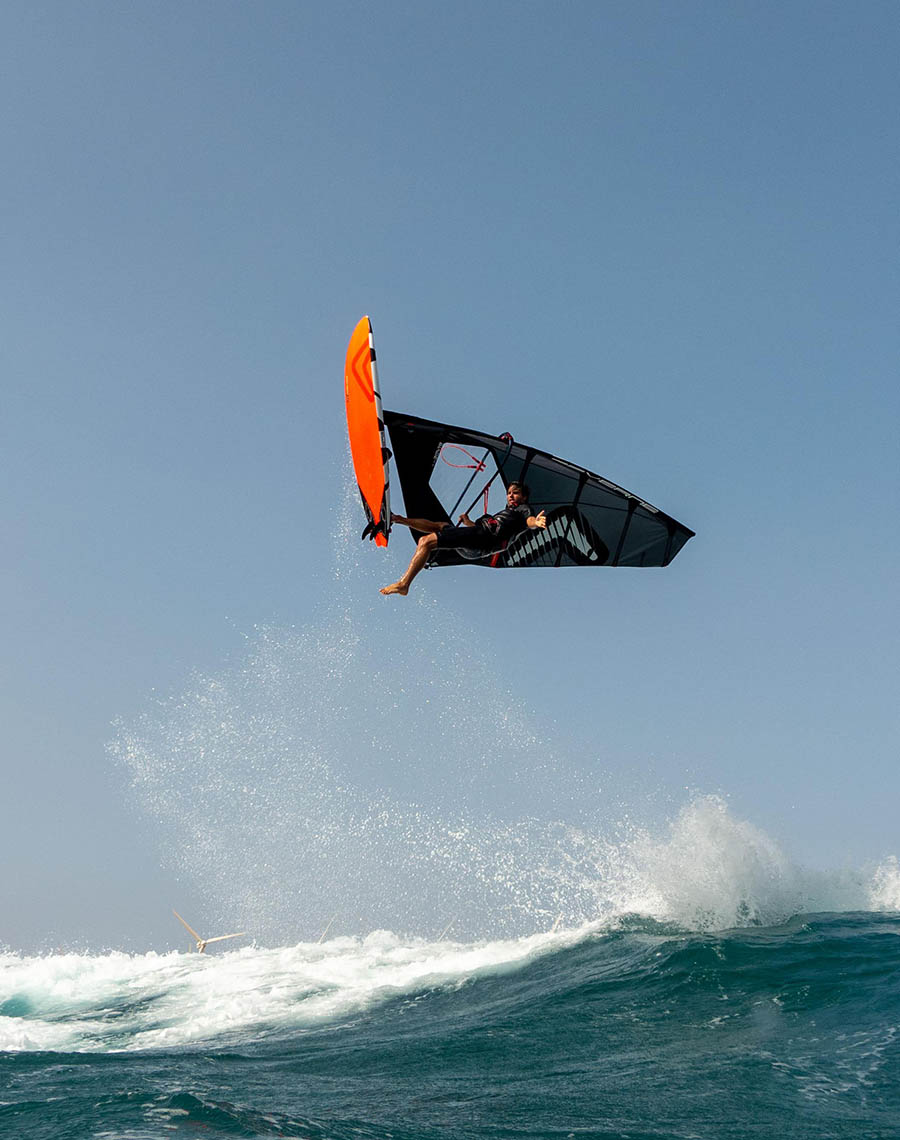
SB: So Philip, whilst you don’t spend a huge amount of time actually in your harness when you’re maxing out in a PWA wave heat, how do you set your harness lines for your wave sessions and kit?
PK: “ The most important part is to be comfortable with your harness lines, you don’t want to be too close to your equipment, you need to be able to move around. For waves I fine tune and actually switch between 32-34inch fixed harness lines to suit the conditions and rig sizes. I use 32inch for when I want to have a bit more control over the gear, for example with small sails when there is strong wind. The longer 34inch lines I use when there’s lighter wind, as it feels more comfortable for me to be further away from the rig with the larger wave sails.
SB: What about boom positioning and on water trimming?
PK: I lift up the sail on the beach by the harness lines to see if it balanced, normally that’s where you want to have the lines. On the water if I feel I have too much backhand pressure I tend to move them a little more towards the clew of the sail. (The opposite would be true if there was too much pressure on the front hand). The harness lines are there to make windsurfing easier, so a cm of adjustment can make your session much easier on the arms.
PK: Sometimes I like to have the harness lines a bit in front of the ‘pressure point’ (centre of effort) of the sail, it makes it easier to have control in the one handed jumps, but if you’re not looking to do those jumps it won’t make much sense.
Simon’s Summary
Okay, so it’s great to see that the man who can land his back loops drier than toast uses a very similar pre sail harness line set up to what we’ve been recommending in the previous Windwise Severne features. Essentially lifting the rig, ideally out of the wind, either by the harness line itself (as Philip does) or with three fingers on the boom so that it’s level/balanced when you lift it, then you can fine tune on the water. Check this out for on water fine tuning.
Next let’s look at how two of the most talented female riders in the world get tuned for their wave and freestyle sessions. Being twins, will their kit set up be the same?
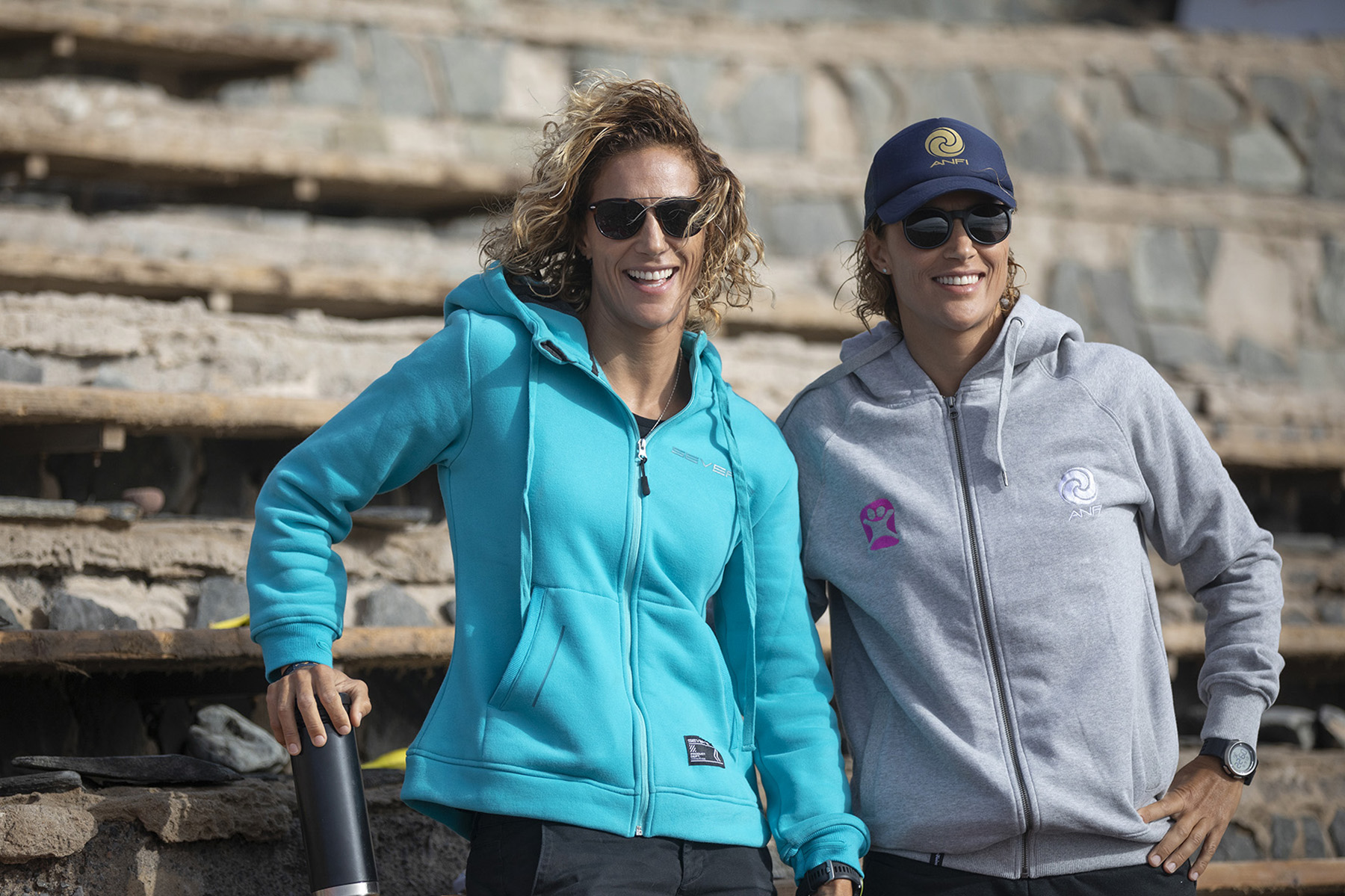
Daida Moreno
SB: So Daida, how do you adjust your harness lines to suit different kit or conditions, and what length and type of Severne lines do you use?
DM: I usually take a good five-ten minutes before entering the water to review all my settings: harness lines position, boom height, base position on the board, fins, sail trim. This is really important and it makes a huge difference for a good wave sailing session. For many years, I used to use 26inch lines for slalom and 28inch for waves and freestyle, but over time it seemed more comfortable to switch to slightly longer lines. So now, for pretty much everything, I use fixed 30inch line a fist width apart on the boom. This is especially good for one-handed jumps and loops, as it’s easier to lean back or arch your body and be away from the rig more.
SB. Do you ever set them differently for different conditions or kit.
DM: If I’m switching from Freeride kit to wave riding situations, I’ll lower my boom a bit. Then on the water, I’ll move the harness line a little at a time. The important thing is to have balanced power while planing, it makes sailing much easier if you have a lighter feeling on your hands. For bigger rigs and being more powered up, I slide the harness line further back on the boom, for smaller sails, I’ll move them forward. I just try to get comfortable on the water and concentrate on the moves I want to learn.
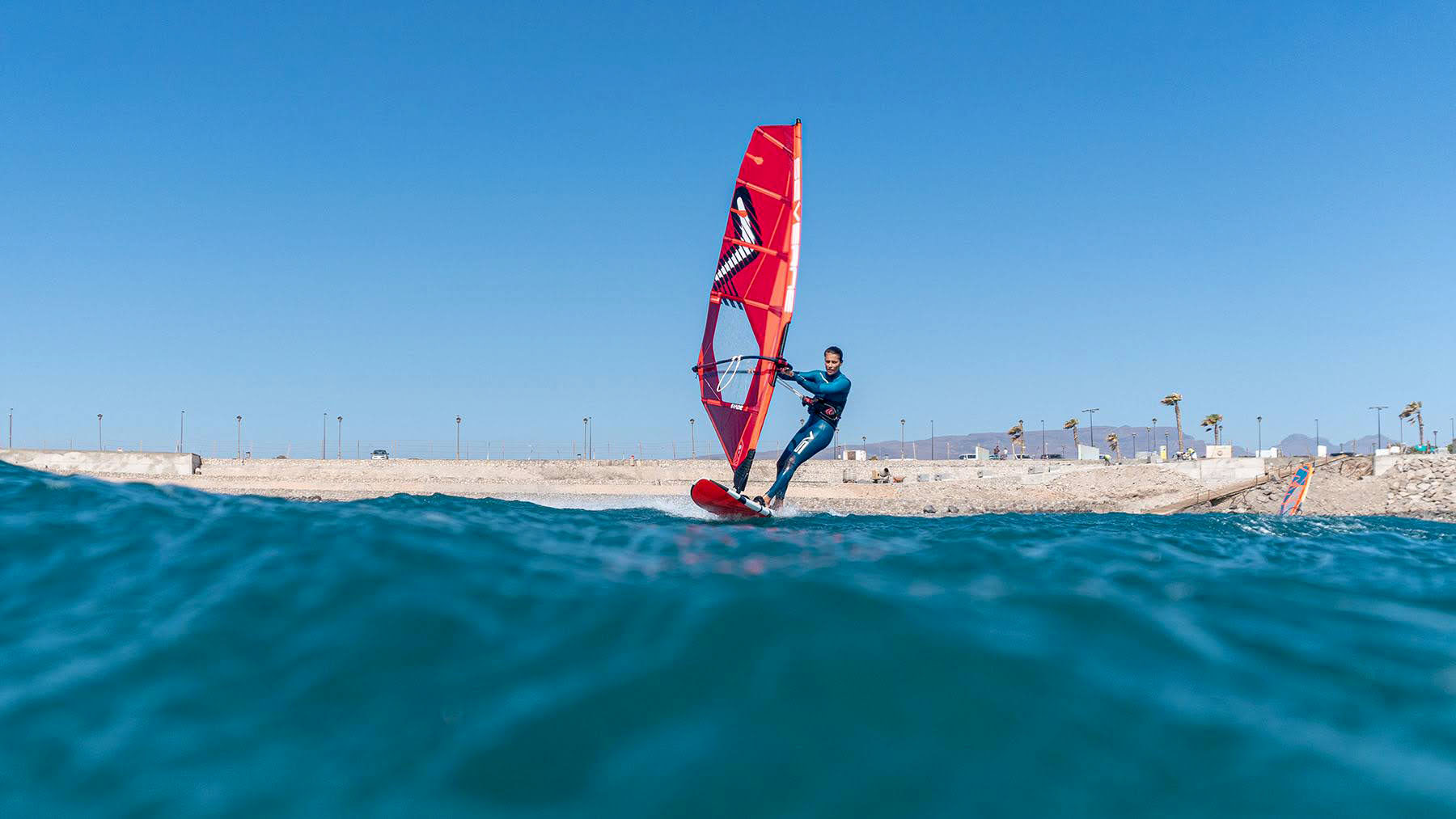
So now let’s see what her twin sister says…
Iballa Moreno
SB: How do you measure your harness line length for wave and freestyle?
IB: I started with 28inch lines then, over time, I felt more comfortable using 30inch Severne fixed length line so my arms and upper body are extended away from the boom. Then I can lean back more and counter balance the rig and get more movement and freedom whilst sailing.
SB: How does the 30inch line length relate to your arm length?
IB: To get the right length line, I hold the boom with my hand with my elbow inside the apex of the harness line. If my arm is straight then I know the line is long enough and perfectly set up for me.
SB: How do you position them on the boom? Are there any on water trimming methods you use or recommend?
IB: I normally place them at the number two mark on the boom (Severne booms have marks to act as reference points for line settings). I rarely change my harness line settings, but if I use a smaller sail I may move them 1/2cm further forward, and then if it’s windy or I’m on a larger sail/boom length or have too much pressure on my backhand, I’ll move them back.
So the twins do have the same length of harness line and judging by the photos and feedback they fine tune them similarly too! Plus they use a similar line length as described earlier in our series.
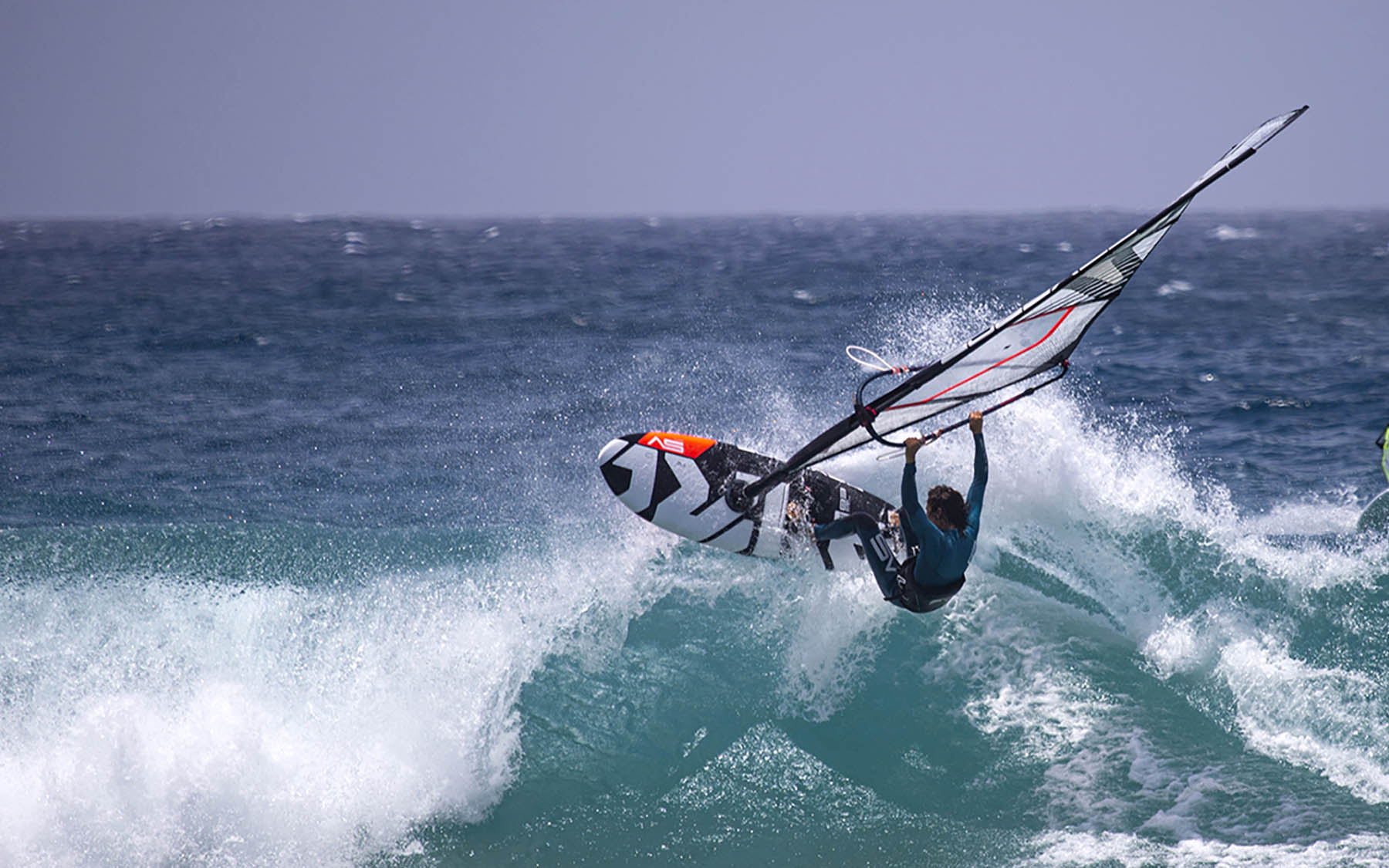
Now a word from the man who rotates smoother and more effortlessly than a spinning sycamore seed and has deservedly just been crowned Freestyle World Champion 2021!
Amado Vrieswijk
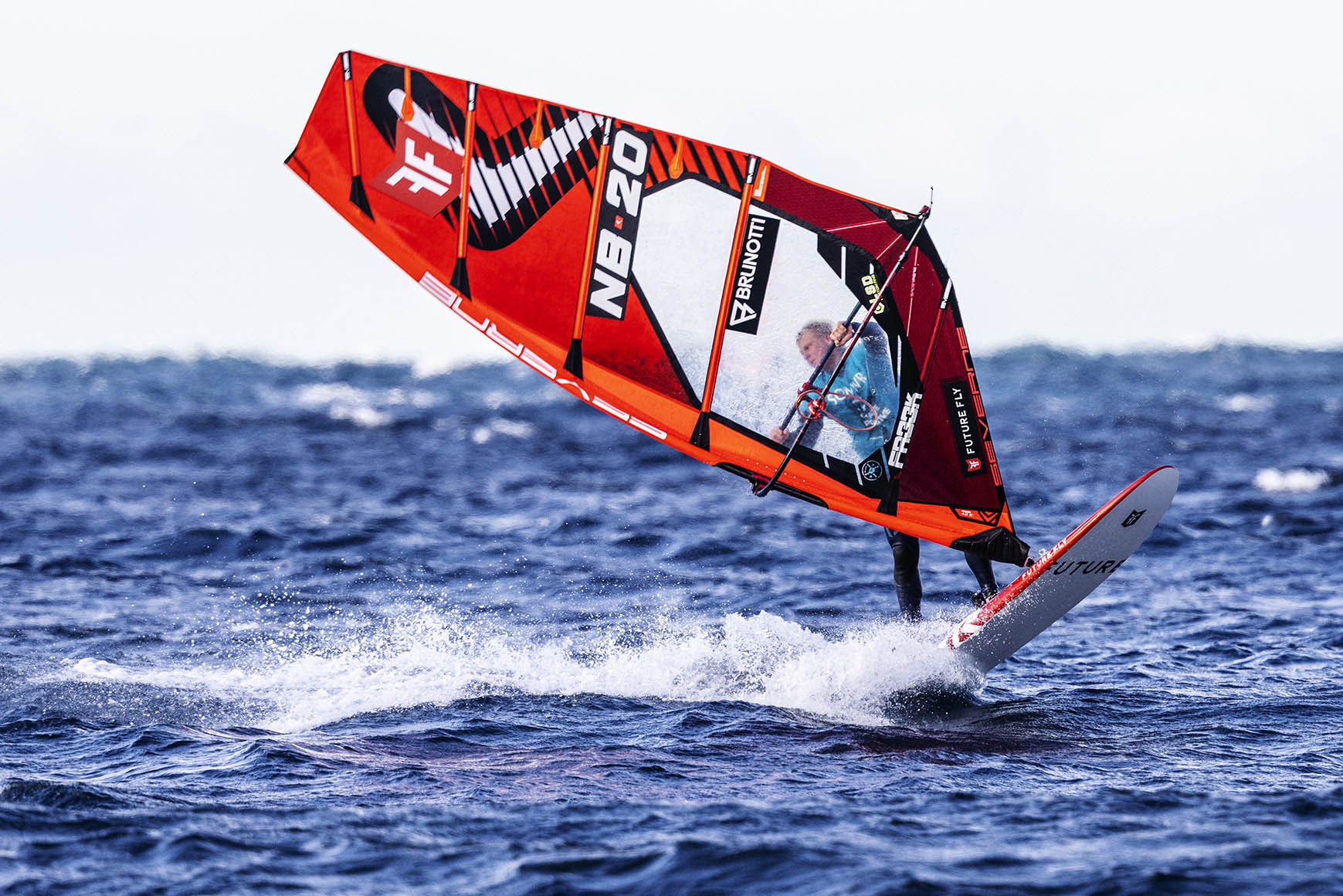
SB: So Amado, in our last ‘Hang In There’ feature, we discovered that you used 28-34inch Severne adjustable harness lines for your Slalom and Freeride set ups, do you make any changes for your wave and freestyle sailing?
AV: For wave and freestyle, I use SV fixed 30inch harness lines on my Enigma booms. It’s better to keep it simple and have fixed length lines and I’ve been using 30inch lines for so long that I’ve got so used to them.
SB: How do you position them on the boom?
AV: I normally set my harness lines in the center of effort/balance point, so when I let go of the boom the sail should stay neutral. Then I’ll adjust forward (light winds) and back (strong winds) to fine tune on the wind strength. We’re talking a few cm’s to adjust to back hand pressure in strong winds and forward in light winds to avoid over sheeting the rig.
Okay, so Amado keeps it simple and fine tunes just as we all should to suit the trim of the sail.
So let’s summarize what can we take from all of this and how does it translate to your own set up?
Your Freewave, Wave & Freestyle Line Length & Set Up
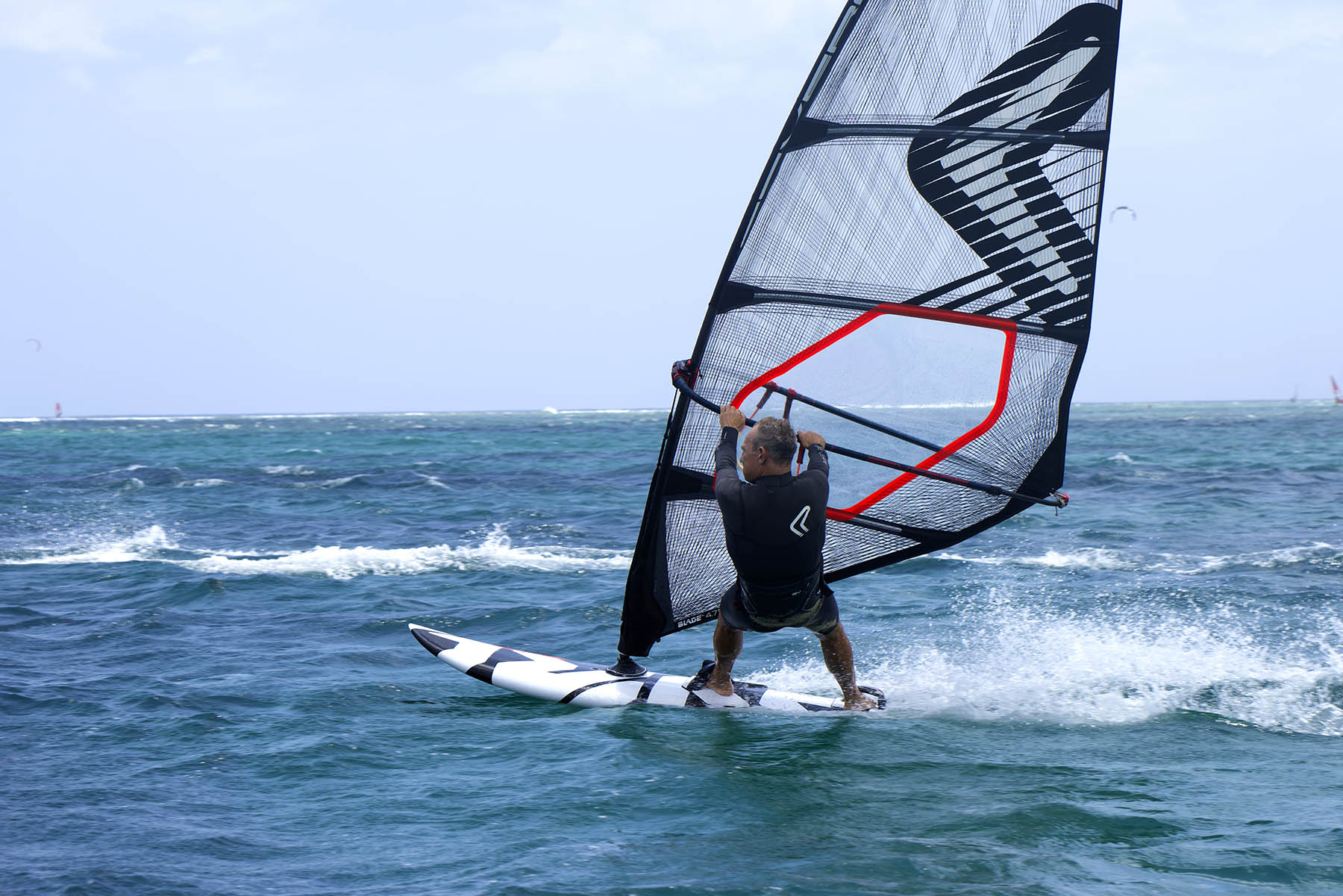
Boom Height: Drop the boom 2-5cm from your Freeride setting.
Harness Line Choice: Fixed lines for simplicity, predictable swing and no need for adjustment.
Harness Line Length: Elbow to blister pads of your palm.
Harness Line Spread: Hands width apart or narrower on the boom for extra sensitivity.
Harness Line Position: Lift sail on land to find ‘neutral’ (= boom level), then fine tune on the water.
Due to the more inboard straps, smaller fins and less locked in feel, the sailing position for Freewave/Wave & Freestyle is often more upright, relaxed and much less ‘locked down’ than slalom/ freeride sailing. The body needs to be ready to move and adjust to rougher water in waves and be poised and ready to pounce into moves for freestyle. Harness lines are set close together on the boom (even touching) for extra sensitivity, easier ‘in harness pumping’ and also allowing for slightly more back-hand pressure / pull or feel. This is all possible because of the shorter boom length and the tendency to use wave/freestyle sails less powered up than Freeride/Slalom rigs. It will also explain why you’ll see wave sailors with their rear hand appearing to be further down the boom compared to the harness line position. But, if they were just blasting along, the rear hand/thumb would still comfortably be able to touch the rear harness line.
Q. Want to master fine-tuning your lines on the water?
A. If you’re trying to get that perfect on water set up, check out more of our guides to make your whole set up work for you. https://www.severnesails.com/dyno-board-setup-with-simon-bornhoft-part-5-harness-lines-boom-height/
Line Length & Width
Interestingly, some of the riders talk of using 30inch lines, (I happen to use 30inch lines too). But it’s vital to say that YOU need to measure your lines to YOUR arm. So, place your elbow in the apex of the line and measure to “blister pads on the palm” resting on the boom. Give or take 1-2cm for your personal preference and using the advice we’ve recommended over this series you can get the perfect set up for the kit and conditions you find yourself in.
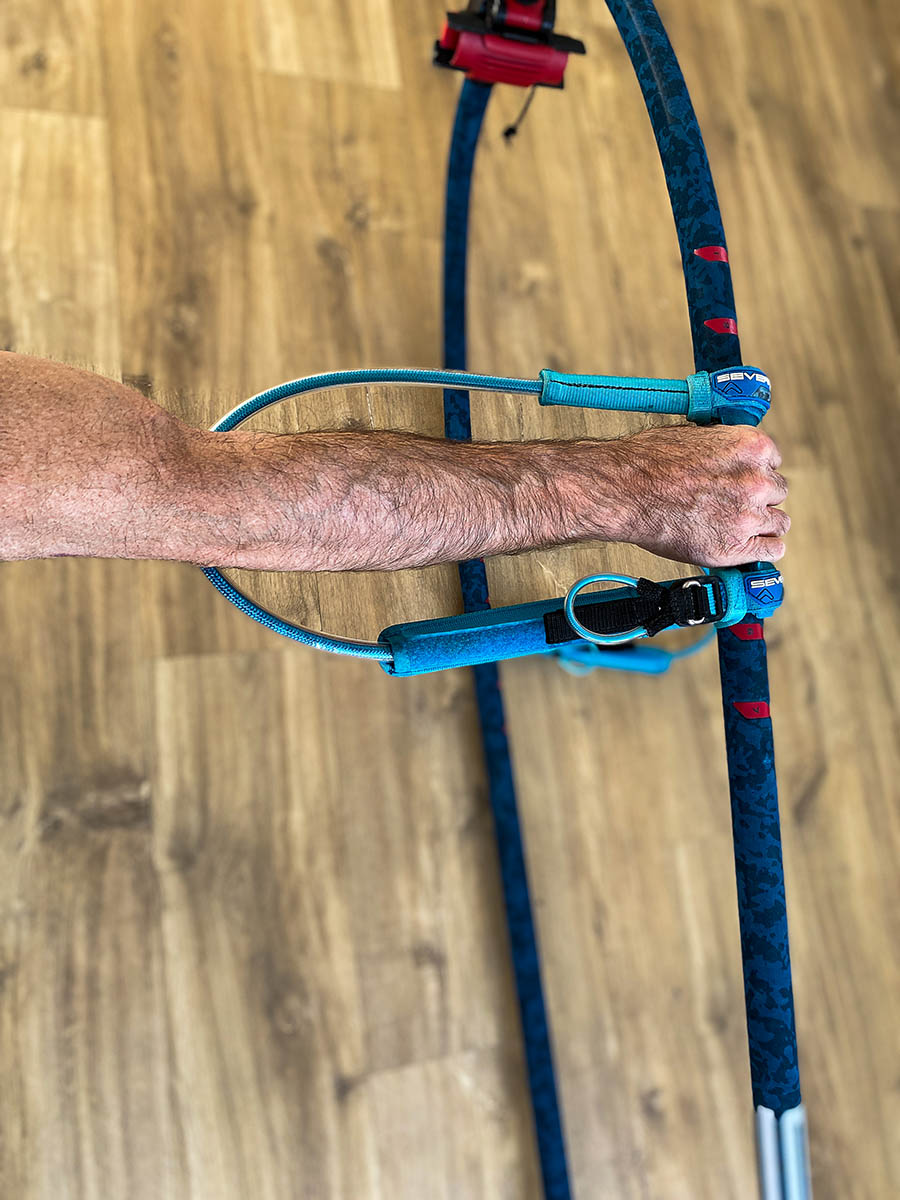
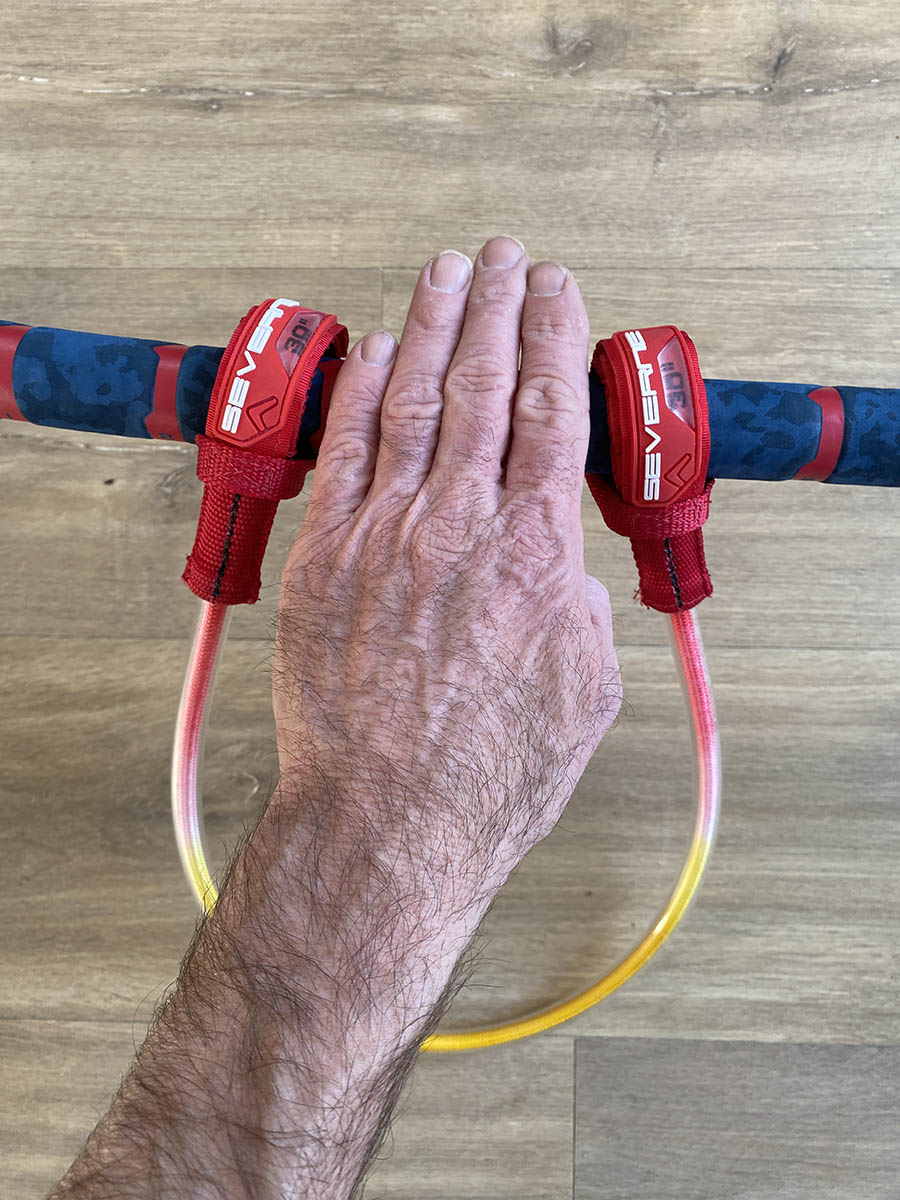
Don’t believe the measurements!
Be aware, that some brands ‘30inch’ lines are different lengths, so make sure you measure up against your arm too!
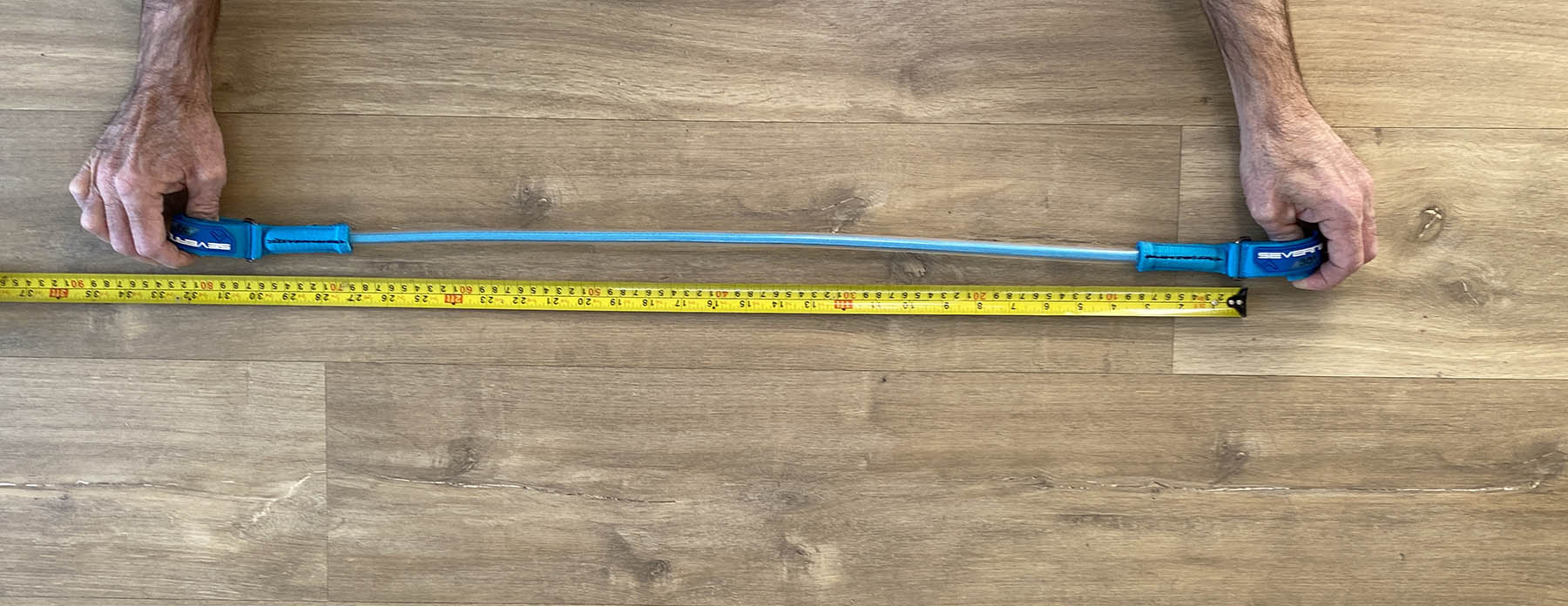
Harness Freeride v Wave Fit
For Freeride/slalom, you want your harness tightened up snug with minimum spreader bar movement so that the rigs power is efficiently directed and transferred through your body. Freewave and Wave kit is generally easier to control, so you can get away with a slightly looser fit. This also allows the diaphragm and chest to breath more easily, which gives you more freedom when carving, turning, jumping or getting in more dynamic body positions.
Simon Says
So when you’re switching or fine tuning your wave kit, run through these key points, follow our on water setting guide. Remember for wave/freestyle setting you can cheat the lines marginally further forward if you like that back hand pressure feeling, sailing under powered or especially if you’re trying to emulate the Severne Team going for those one handed back loops!
In the ‘Hang In There’ Part 4 we’ll look at Windsurf Foiling Set Ups Line Settings
Ask Simon
If you have any questions about your harness lines or other aspects of your windsurfing, you can ask Simon @ info@windwise.net. It’s well worth joining a skill enhancing Windwise experience to get the most out of your time on the water and try some stunning Severne kit under the guidance of your personal coach!
Windwise Winds Of The World Tour 2022
Freeride + Freewave + FoilWise
Tenerife / Bonaire / Alacati / Prasonisi / Mauritius + Australia + More
Copyright: Simon Bornhoft Windwise 2021-2022
More harness lines guides
EVERYTHING YOU NEED TO KNOW ABOUT YOUR HARNESS LINES – HANG IN THERE PART 4 Windsurf Foiling
Windwise coach and Severne Team Rider, Simon Bornhoft, continues his ‘Hang In There’ series, looking at different windsurfing styles and disciplines. For this issue we focus on windsurfing foiling and how to get set up for maximise flying time.
Everything you need to know about your harness lines – Hang In There Part 2 Slalom & Freeride
Windwise coach and Severne Team Rider, Simon Bornhoft, continues his quest to help you get the most out of your precious time on the water and your kit. For this feature we continue our ‘Hang In There’ harness line series, looking at different disciplines and styles in windsurfing and draw on the speedy talents of Team Severne top riders.
All you need to know about your harness lines – ‘hang in there’ part 1
Windwise coach and Severne Team Rider, Simon Bornhoft, buckles down and takes a close look at your most dependable piece of windsurfing kit, the humble harness line.

